Mulch is good for your plants and a great labor saver. It reduces evaporation, slows weed growth, improves soil quality, and makes your gardens look more attractive. And more, it’s inexpensive and easy to apply.
Common Types of Mulch
Wood chips and bark are the most common types of mulch, but you can even use stones to good effect.
In most cases, a mulch backyard greatly simplifies your gardening chores. Mulch includes a variety of materials that you use to cover the bare soil in your gardens. Most often you think of it as organic materials such as wood chips, cedar bark mulch, and compost, but it also includes materials like stone and gravel. Adding a layer of mulch pays off by:
- Reducing water loss from the soil. It slows evaporation and improves water absorption when it rains or you turn on the sprinkler.
- Slowing weed growth.
- Improving soil quality. Organic types enrich the soil as they decompose.
- Protecting plant roots from hot and cold temperature extremes and sudden fluctuations.
- Adding color and texture as part of your overall garden design.
Whether you’re an ardent gardener or a casual one, you’ll have less watering, weeding, fertilizing and general maintenance.
Organic Mulch
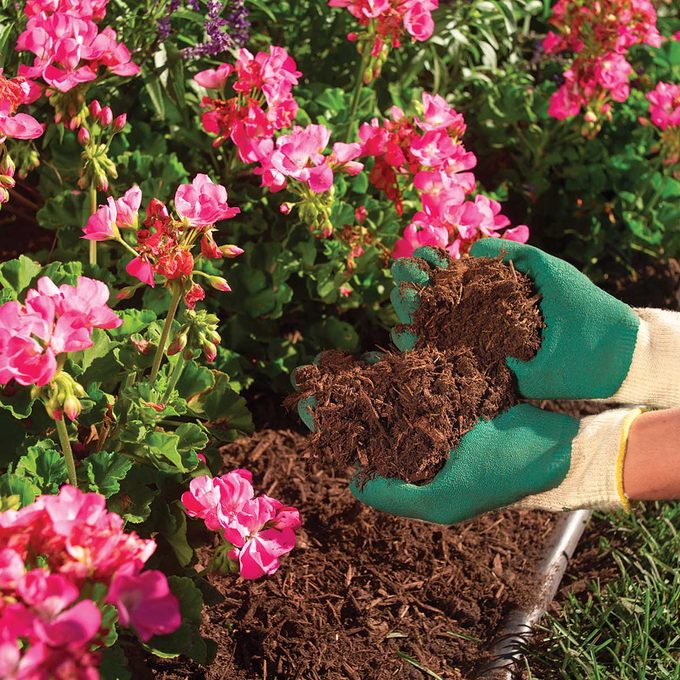
Use organic mulches when possible, because they decompose and improve the soil as they break down.
Use an aged organic mulch (partially decomposed wood products) to improve the soil and encourage all-around plant growth. It will continue to decompose and add nutrients to the soil. It’s often sold in bulk. You may have to bag it yourself. Haul it home in a pickup or have it delivered.
Use fresh organic mulch (wood chips and bark) where you want to control weeds and improve appearance, but where soil improvement isn’t needed, such as around trees and shrubs. While organic, it hasn’t begun to decompose and will last longer than aged mulch. It’ll also enrich the soil as it decomposes.
Stone Mulch
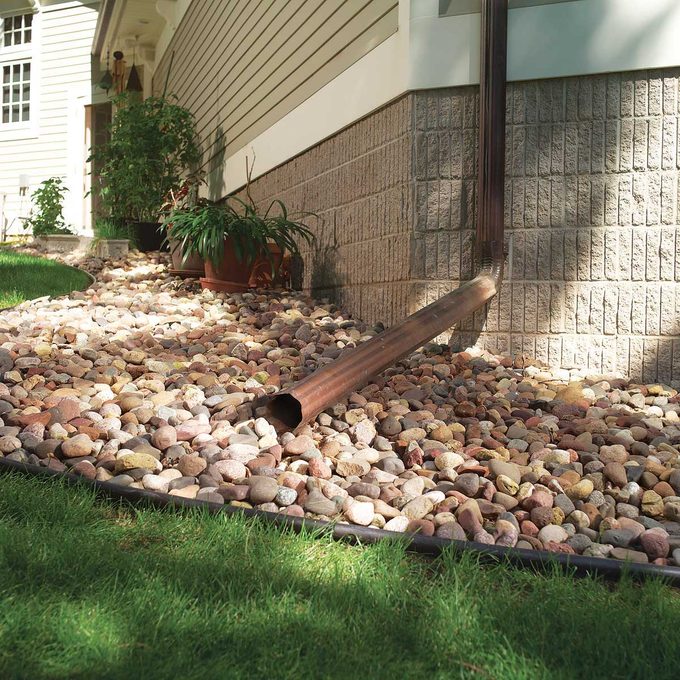
Use stone mulch to stabilize garden areas vulnerable to washout, for example, on hills and around downspouts. Or use it to improve the appearance of your garden.
Which Mulch Keeps Its Color the Longest?
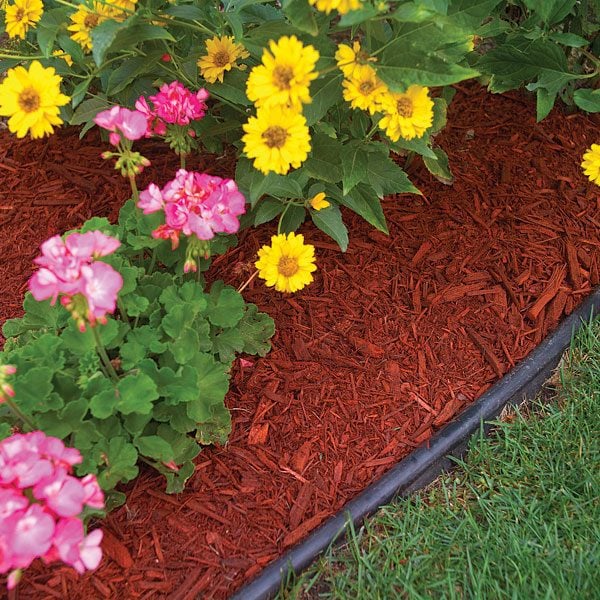
Most natural organic mulches will turn gray in about a year, depending on the amount of sunlight that hits them. However, if you want more color to accent the colors of your plants and flowers, buy custom-colored organic mulches (such as the red dyed mulch pictured above). They’re processed with vegetable dyes in several colors. Expect the color to last for two to three years. Bright colors like red bark mulch might run a bit during a hard rain, but the color should wash off nearby walks. Colored mulches also tend to have finer textures, a characteristic that helps them mat together and stay in place on slopes. Ask for colored mulch at your local nursery.
Stone mulches also come in a variety of colors, depending on the rock types available. The colors won’t fade, but lighter-colored rock may need periodic cleaning to keep it looking fresh.
Will Mulch Work Everywhere?
Nope. Organic mulches spread over damp, low areas may retain too much moisture for plants. Sometimes they’ll encourage an overpopulation of slugs and other pests that’ll eat or harm certain plants. And rock mulches can get extremely hot and bake shallow plant roots. It’s always helpful to talk to a local nursery expert about local problems and your specific yard conditions when selecting mulch. And ask for recommendations.
Chunky Mulches Last Longer
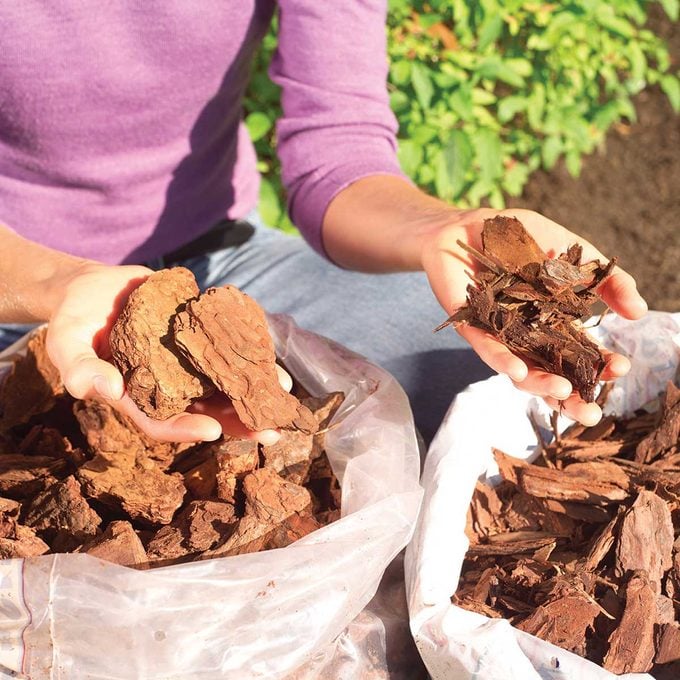
In general, pick a type with larger chunks, because it’ll decompose more slowly. And choose bark-type mulches (such as pine bark nuggets) before shredded wood types (such as cedar bark mulch, cypress and hardwood). Keep in mind that mulch reduces maintenance but doesn’t eliminate it. Organic mulches have to be replenished periodically, usually every two to three years.
Will Mulch Stop Weeds?

Pull all weeds before mulching and add at least a 4-in. layer to keep weed seeds from germinating.
Mulch won’t stop weeds completely. Applied deep enough, it will prevent many weed seeds already in the soil from germinating and growing. But it won’t stop weeds that have already rooted. Tough weeds like dandelions will push right through if you don’t dig them out first. And more weed seeds will blow in and take root in the mulch (in both organic and stone). All mulch-covered gardens require maintenance, though less than if you don’t use mulch.
How Thick Should I Apply Organic Mulch?
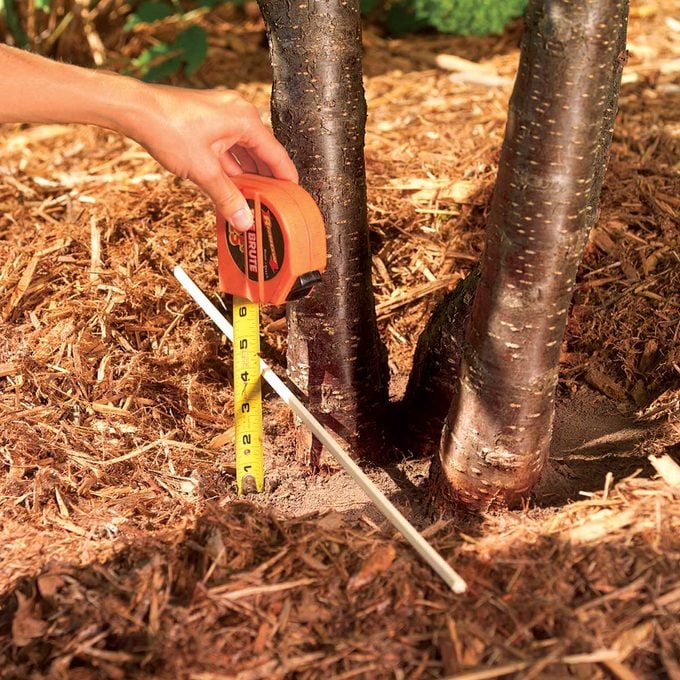
Spread about 4 in. of mulch to slow weed growth and retain moisture. However, clear a 6-in. area around woody stems to prevent rot.
A layer of mulch 3 to 4 in. deep will keep most weed seeds in the soil from sprouting and increase moisture retention. However, more isn’t always better. Limit the depth to 5 to 6 in., especially around shallow-rooted plants. And pull back mulch from the base of plants so it doesn’t cause rot.
If you want to use organic mulch on slopes, apply a shredded type about 6 in. deep. It’ll mat together and stay in place better than a thinner layer.
Note: Cocoa bean mulch is popular in some areas because of its deep brown color and chocolate odor. But it’s a bit tricky to use effectively. Apply it no more than 1 in. thick, because thicker layers tend to retain too much water and become moldy. You may also have to replenish it more often because it blows away easily when dry. Also be aware that dogs can get sick if they eat or chew on this mulch.
Where To Buy Mulch and Getting It Home
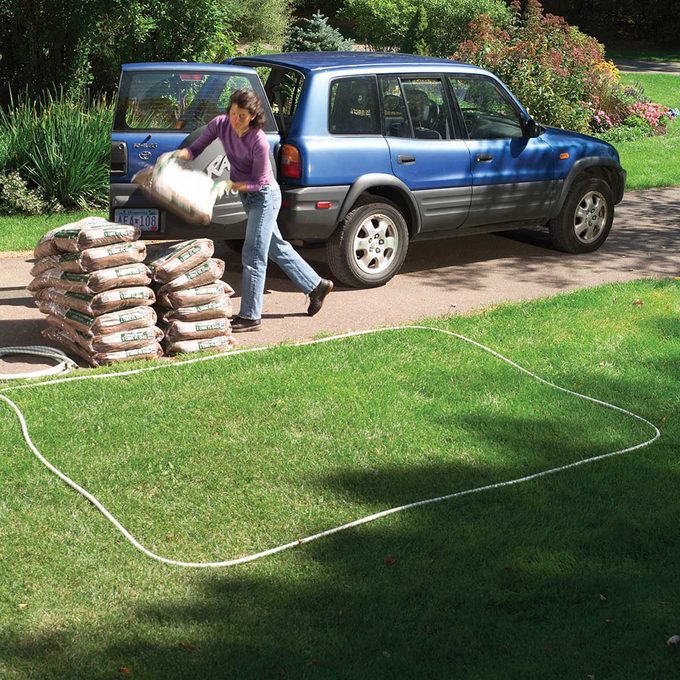
You can easily calculate how much mulch you need by multiplying the length and width of the garden bed (in feet) and dividing the result by 3. This will give you the volume you need in cubic feet (cu. ft.) to cover a bed 4 in. deep. The volume of mulch in a bag will be printed on the label. You’ll be surprised by how many bags you’ll need. A medium-size SUV can hold about a cubic yard (27 cu. ft.), or about 14 bags. When spread 4 in. deep, that much covers a bit more than a 7 x 11-ft. rectangle. A big garden takes a lot! Consider delivery or bulk (dumped, not bagged) for large areas.
Should I Use Landscape Fabric Under Mulch?
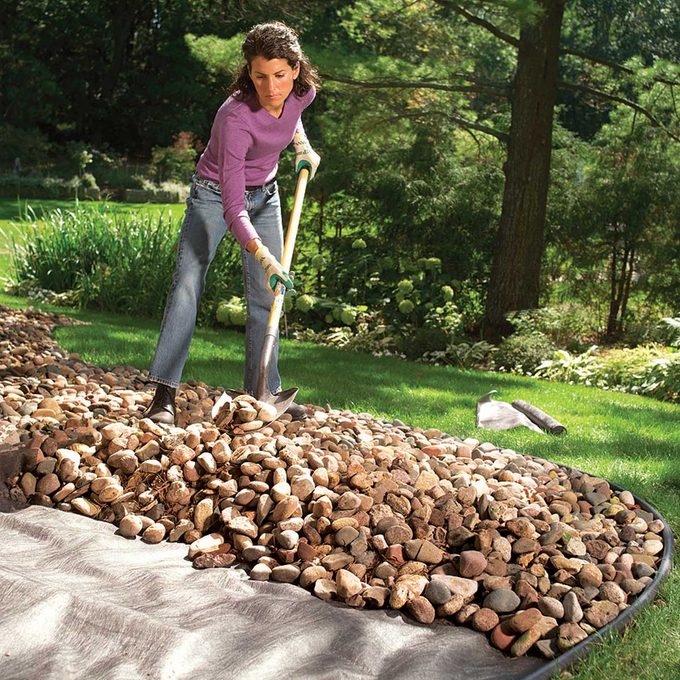
Place a porous landscape fabric under stone to separate it from the soil and slow weed growth. Don’t use fabric under organic mulches.
Use fabric only under stones and gravel. It’ll keep the rocks from sinking into the soil and make removal much easier if you want to change it later. The fabric will also slow down weeds that have rooted in the soil. Choose a fabric that allows water and air to pass through. Avoid using impermeable plastic, especially if you have trees, shrubs or other plants nearby.
Unfortunately, landscape fabric also makes weeding extremely difficult; you can’t get a shovel down through the rock and fabric. And it’s tough to pull weeds that root into the fabric.
Don’t use fabric under organic mulches. It’s better to let them decompose and mix into the soil.
How Do I Keep My Stone Mulch Clean?
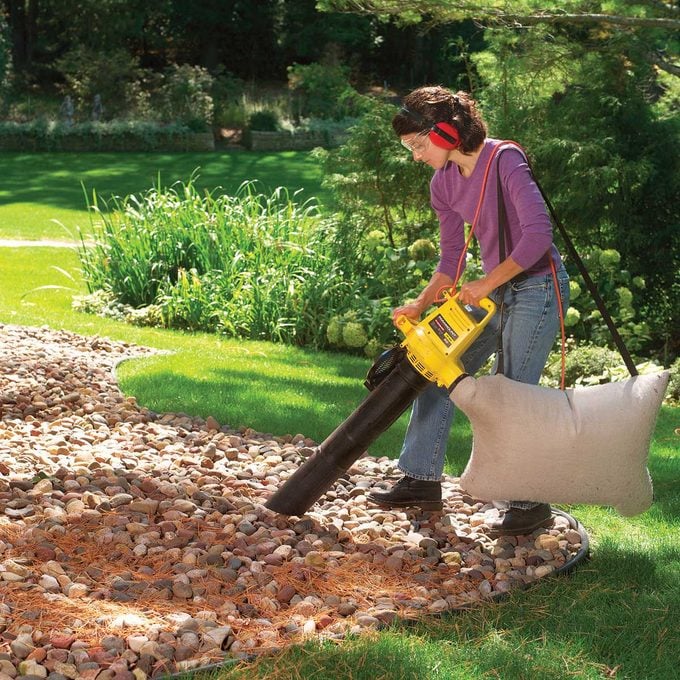
Stone mulch is difficult to keep clean. Use a leaf vacuum to suck up most of the debris.
You’ll have to pull weeds occasionally, but the main problems are leaves and other debris from trees and shrubs that clutter the appearance. The easiest way to remove debris is to suck it up or blow it away with a leaf vacuum. Stone placed directly under a tree is virtually impossible to keep clean. Better to choose organic mulch, because the tree debris will blend in.
Article source here: Everything to Know About Mulch


No comments:
Post a Comment